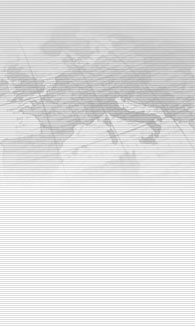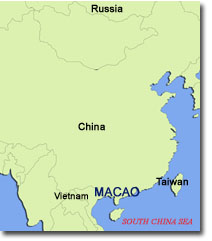 |
 |
|
|
|||||||||||||||||
The total population of Macao is around 451,000, with most people live in the northern part of the peninsula which makes it to become the worldˇ¦s most densely populated area. The racial distribution is simple, since around 95% of Macao residents are Chinese, only 2% are Portuguese and 1% is Filipinos. There is a nearly balanced sex ratio as males only outnumber the female population by less than 2%. The literacy rate in Macao is around 95%. |
||||||||||||||||||
| Language | ||||||||||||||||||
|
The official and spoken languages are Chinese
(Cantonese) and Portuguese.
Over 97% of Macao people speak Chinese and only less than 1% speaks Portuguese, and the rest speak English, Filipino and some other languages. |
||||||||||||||||||
| Currency | ||||||||||||||||||
| The official currency is Pataca (MOP), and Hong Kong Dollars (HKD) are also widely used. | ||||||||||||||||||
| Economy | ||||||||||||||||||
|
Macao remains one of the most open economies in the world after the reversion to China in 1999. The main industry is net exports of goods and services, especially tourism and apparel exports, which account for roughly 41% of GDP. It is followed by fireworks manufacturing and textile. But since much of the textile industry has gradually moved to the mainland, Macao intends to rely more on gambling and trade-related services. Furthermore, in order to diversify the economic sector, some other small industries are being developed, like toys, artificial flowers, and electronics. |
||||||||||||||||||
| Government | ||||||||||||||||||
|
Macao became Portuguese's colony during the
16th century, which was the first European settlement in the Far East.
After the agreement of Portugal and China was signed in 1987, Macao
became the Macau Special Administrative Region (SAR) and hand-overed
to China in 1999. Under the "one country, two systems" promised by Chinese government, instead of practicing socialist economic system, Macao can enjoy a high degree of autonomy in all matters except foreign and defense affairs for next 50 years. The Government is composed of the Chief Executive, which is chosen by a 300-member selection committee for up to two-five year terms; a 10-member Executive Council, including five government secretaries, three legislators, and two businessmen; and a 27-seats legislative Council or LEGO. Elections are held at intervals of 4 years. |
||||||||||||||||||
| Law and Taxation | ||||||||||||||||||
|
Under the principle of "One country, two systems", the Macao
SAR maintains Continental European law as the foundation of its legal
system. Under the basic law, Macao has independent judicial power including the power of final adjudication. Its has Court of First Instance, Court of Second Instance and the Court of Final Appeal and the structure, powers and functions of the courts are established by law. The principal corporate legislation is Macao SAR's Offshore Law, 1999. |
||||||||||||||||||
| Local Infrastructure | ||||||||||||||||||
|
There are two bridges, one is Nobre de Carvalho Bridge and the other
is Friendship Bridge (Ponte da Amizade), which link the peninsula
to Taipa. Apart from the bridges, there is a six-lane and 2.2km long highway, Taipa-Coloane Causeway, serves as the connection to and from the peninsula to the two islands as well. |
||||||||||||||||||
| Advantages | ||||||||||||||||||
| -
Political stability - Sound economical development - Strong ties with mainland and other regions - No exchange control regulations - Exemption on offshore tax - No disclosure necessary - Excellent communications facilities |
||||||||||||||||||
